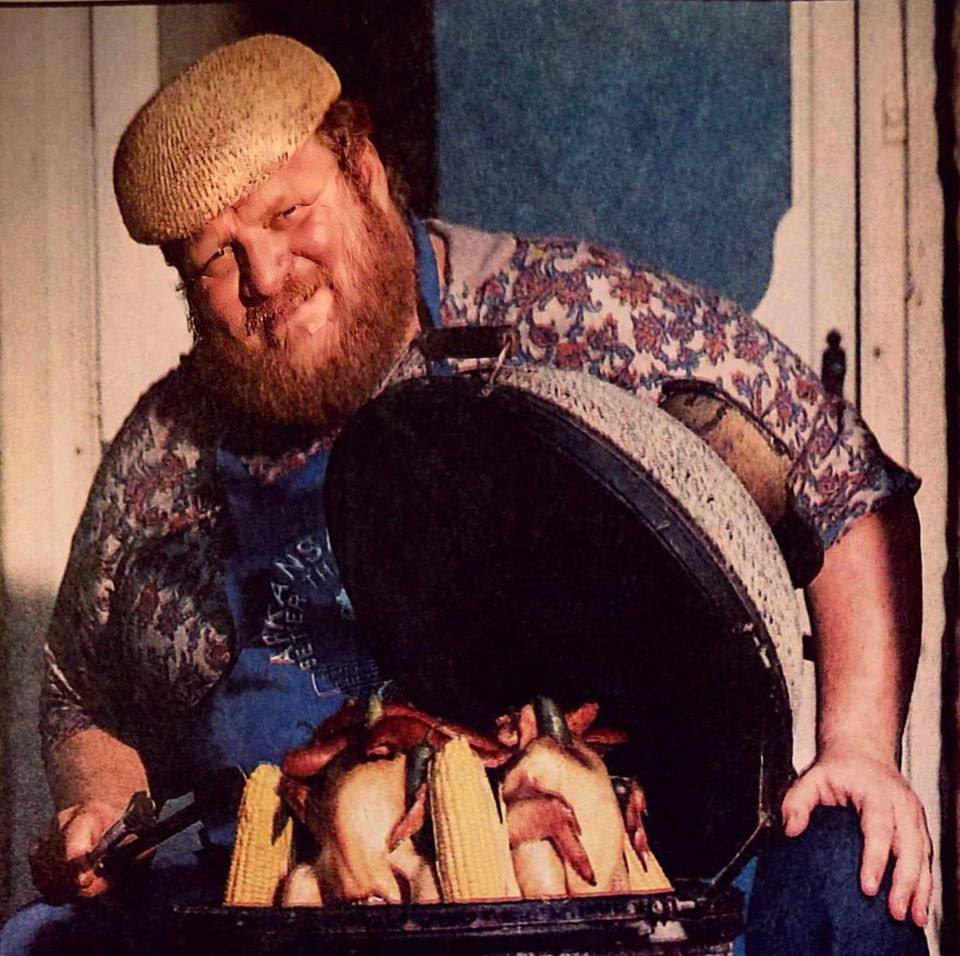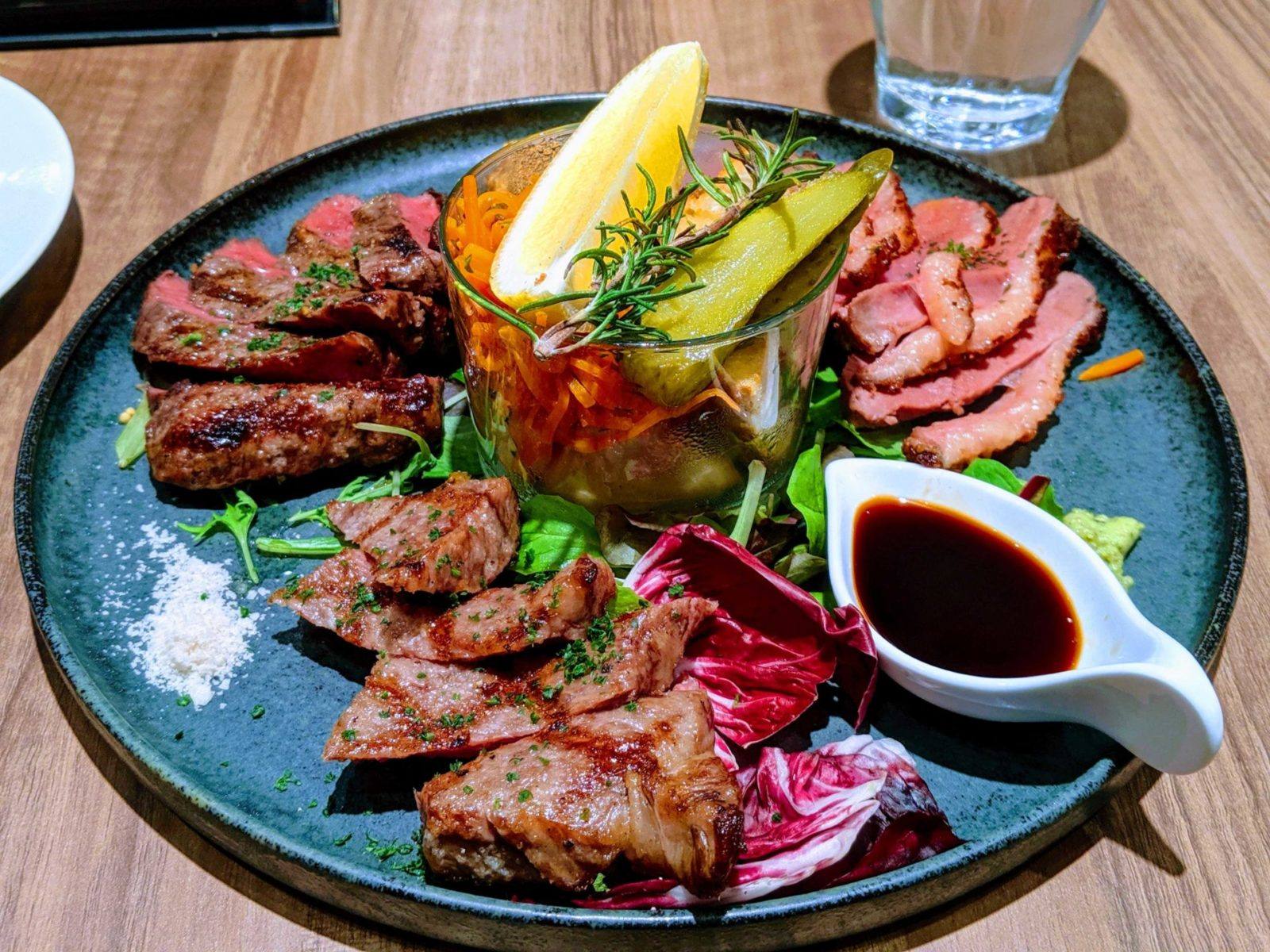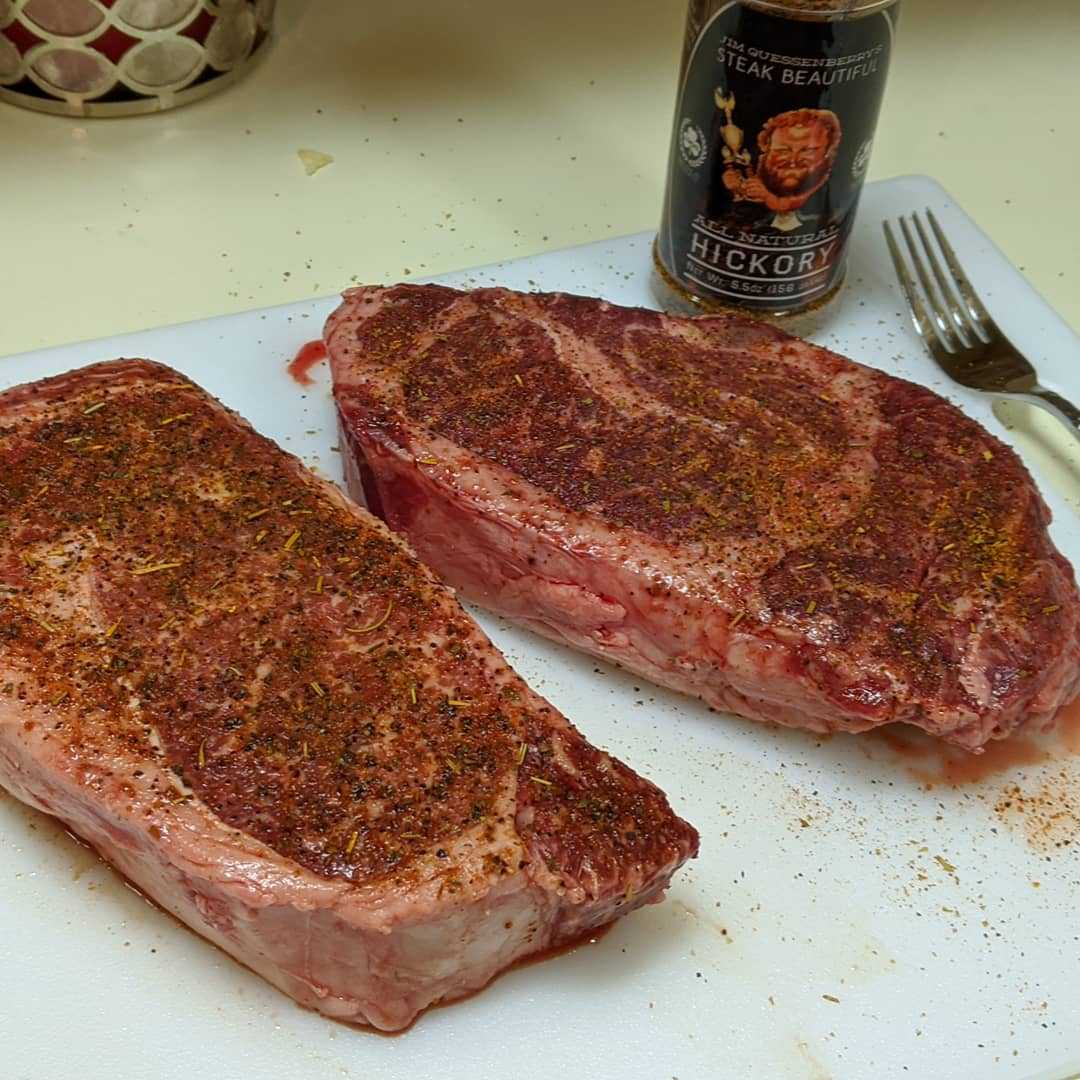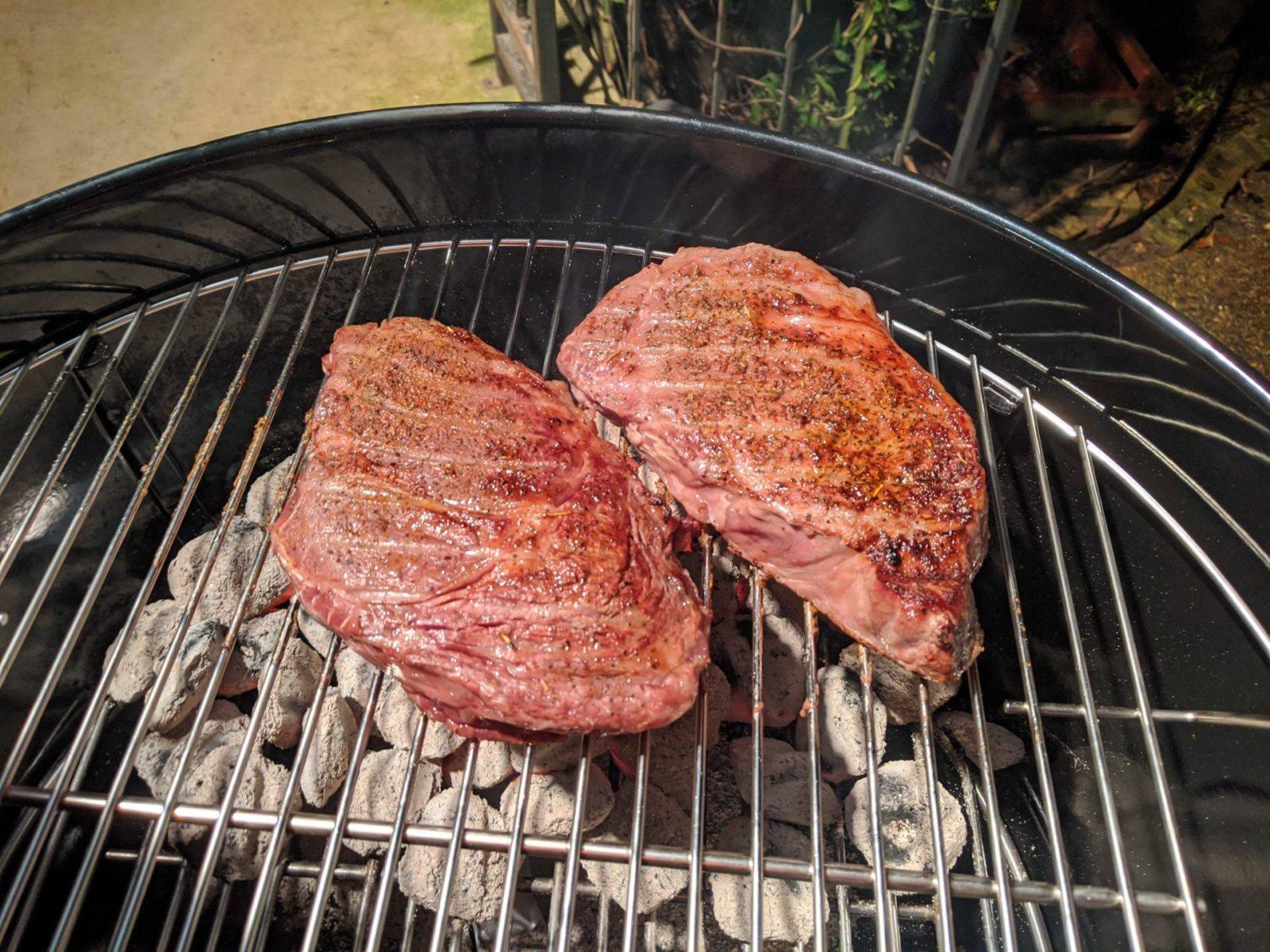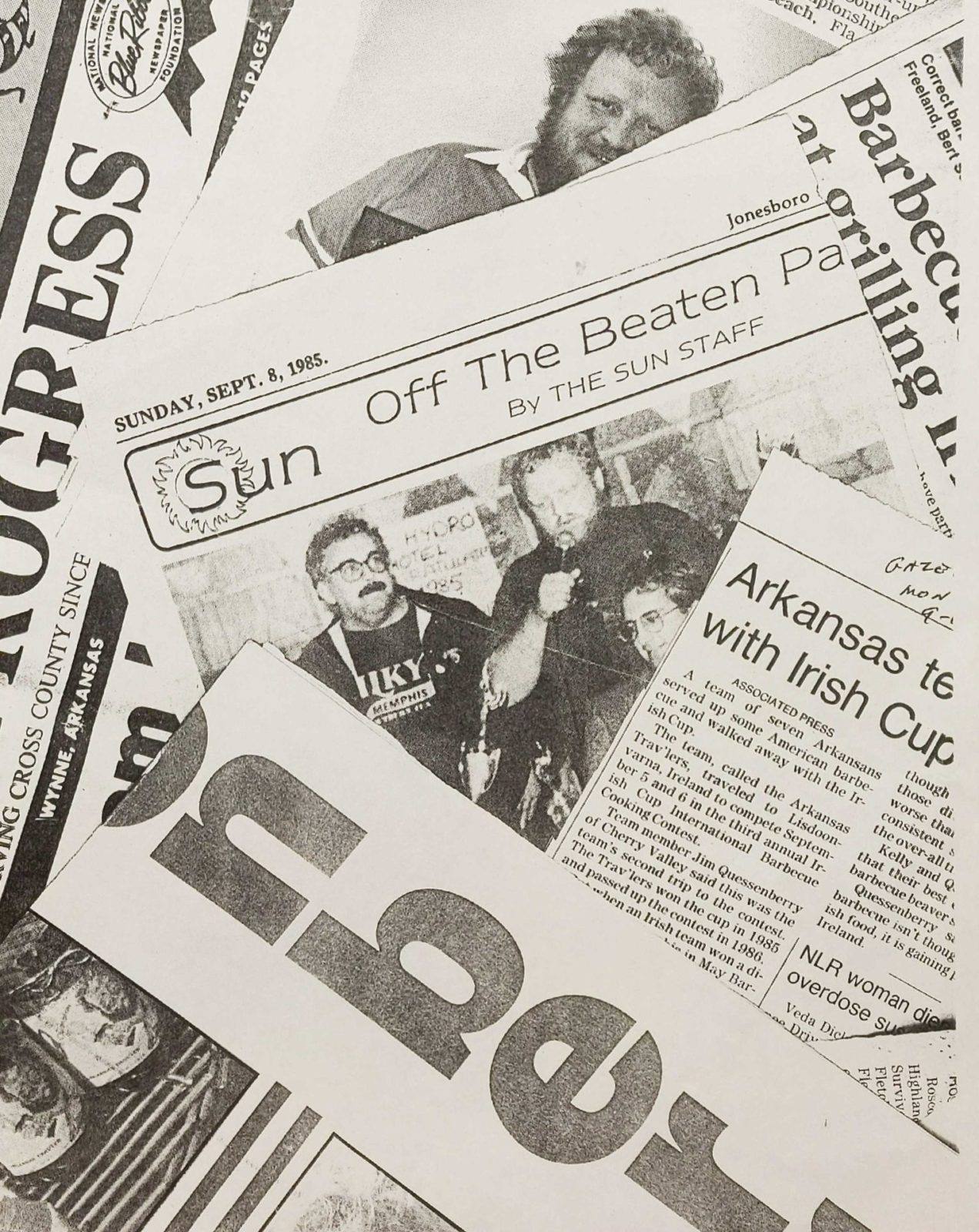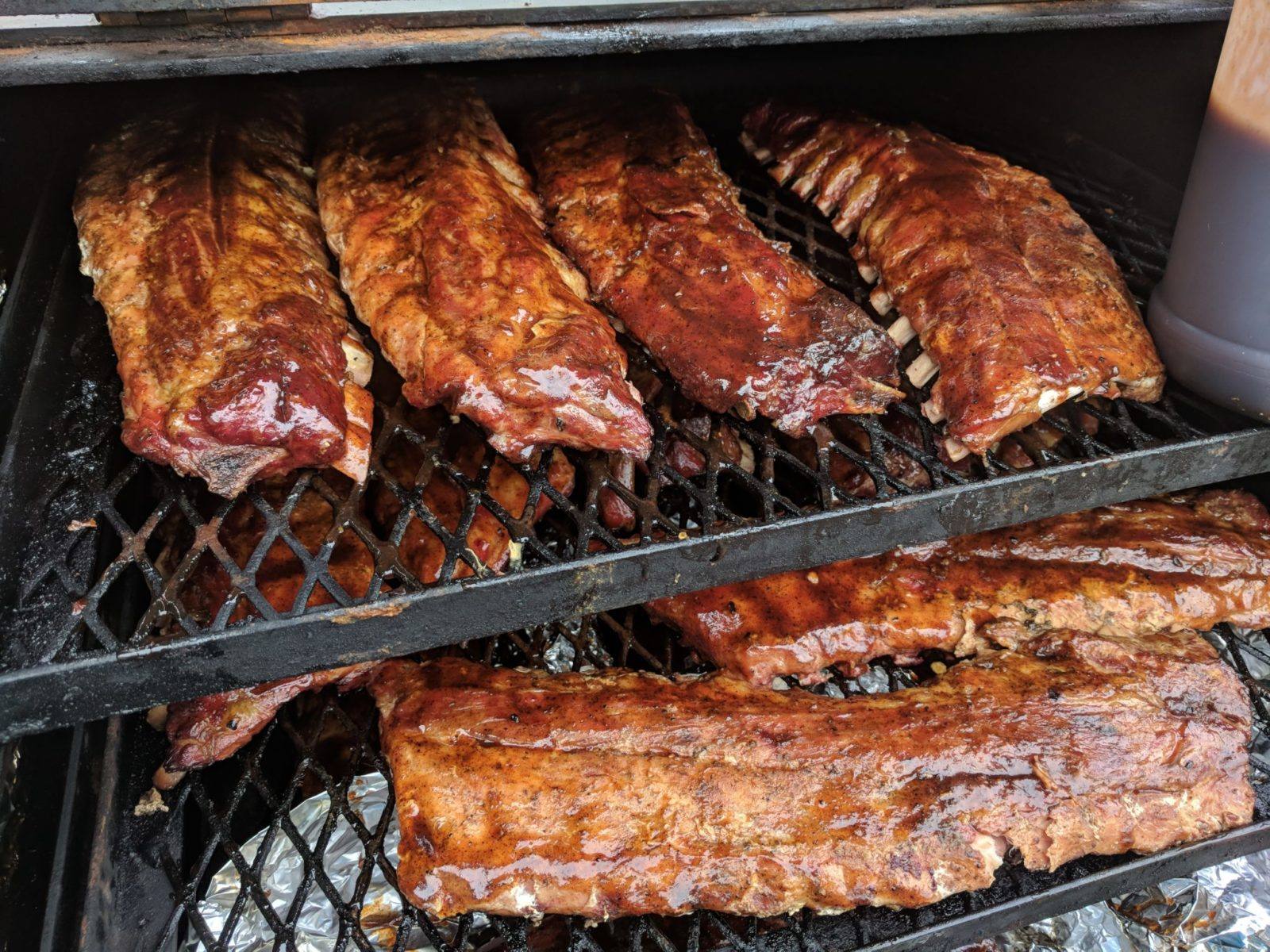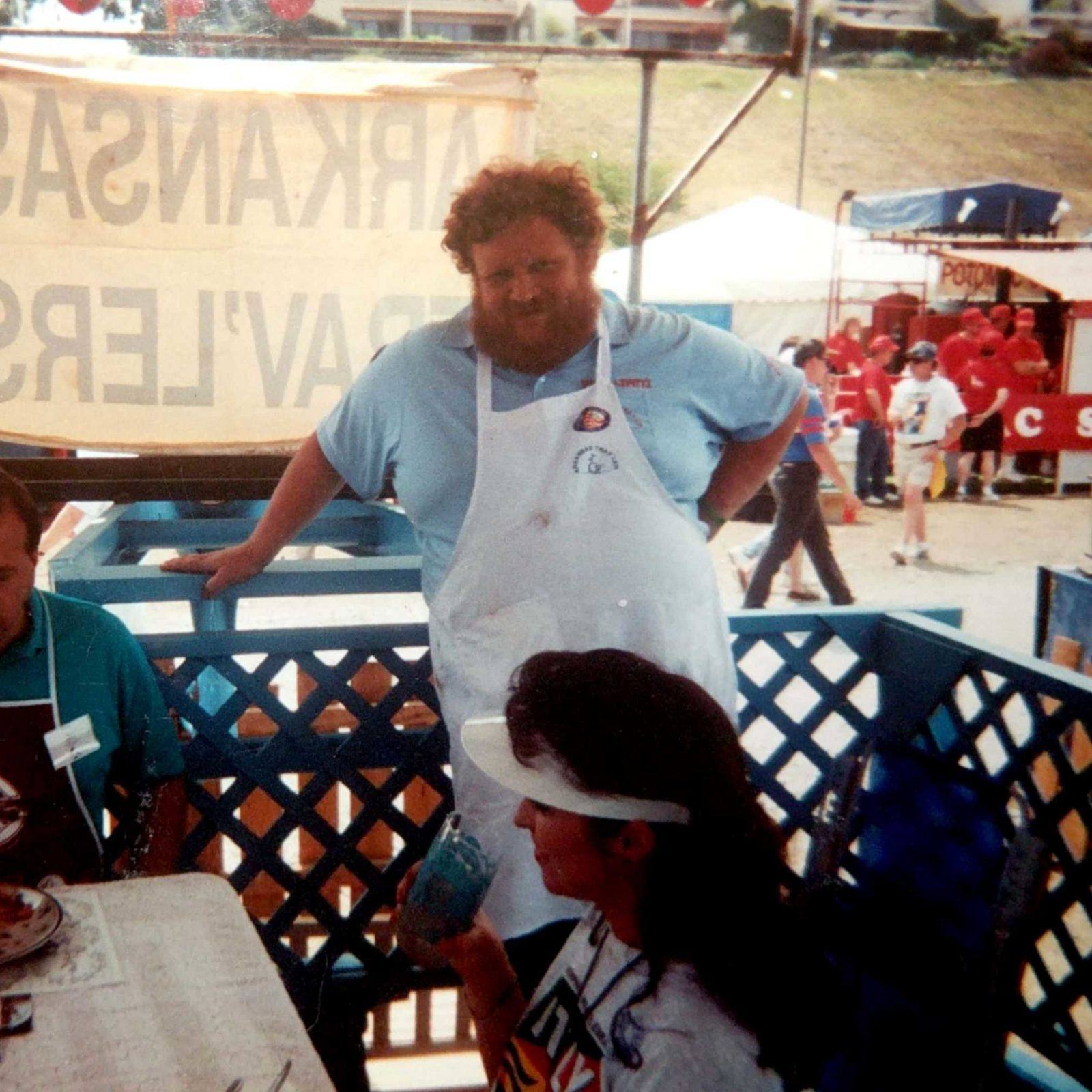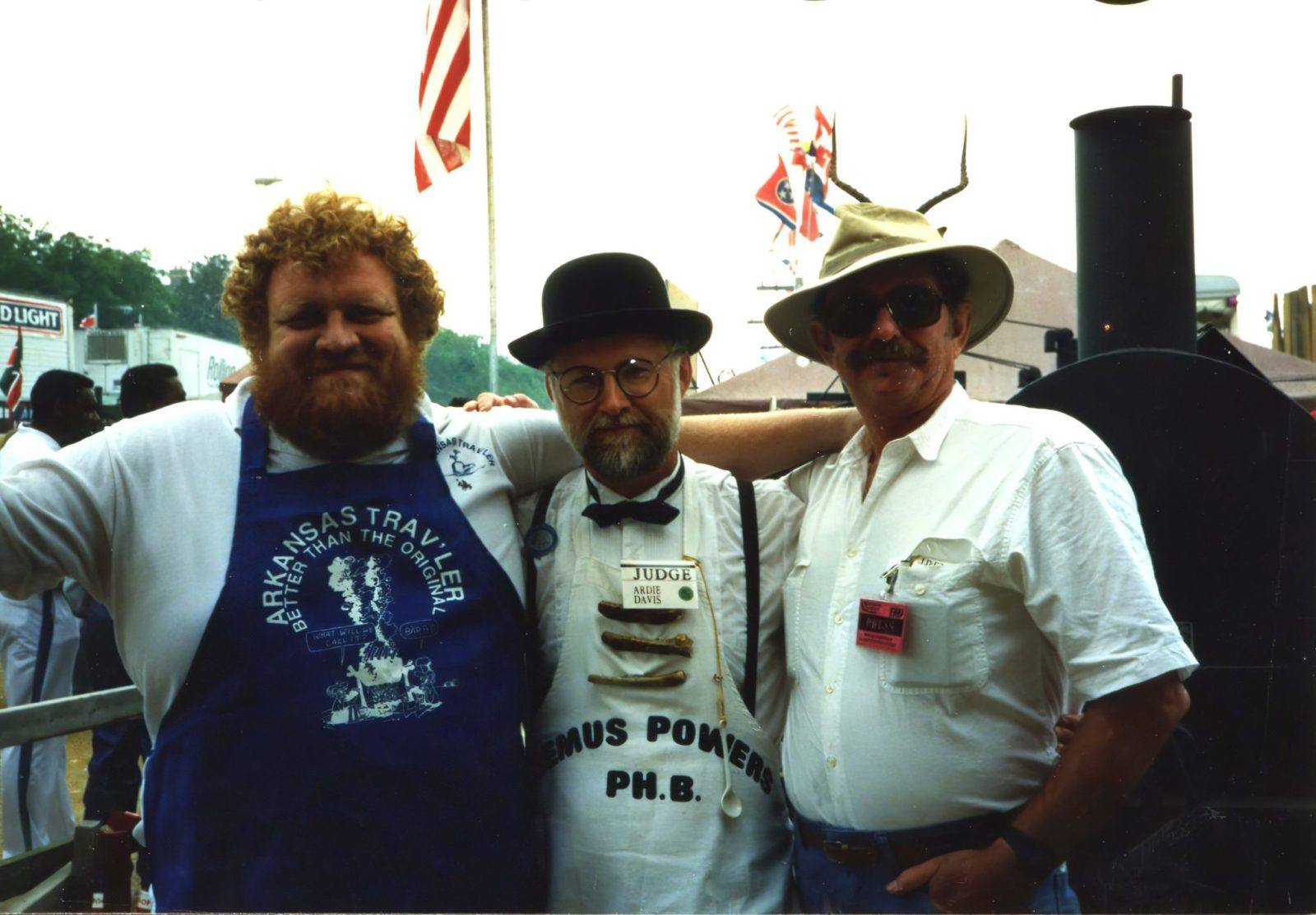Smokestack Lightening Interview Tapes: Jim’s Theory on the Popularity of BBQ
Lolis Elie and Frank Stewart interview Jim Quessenberry on BBQ becoming popular. Jim cracks a joke or two to his best friend, and BBQ partner, Arthur McDaniel.
[00:00:00] Jim Quessenberry: [00:00:00] You want my theory on why barbecue is catching on?
Lolis Elie: [00:00:03] Yes, Please.
Jim Quessenberry: [00:00:04] Okay. Uh, several reasons… uh, one European market has fallen in love with it, and the Europeans, I’ll tell you why they jumped on it. Uh, they got to watching, Dallas, stuff like that on TV. And, uh, and it was sorta like the old cowboy shows. It was something interesting to them of going outside and having an outdoor sport that didn’t take any exertion, because anything in European’s are falling in love with, you have that backlash. And so, you know, it, it became, again, it had got a second look from Americans. Well, you know, your Cajun foods has been a big rage lately? Okay. It’s just naturally time for it to drift into barbecue. Plus… thank you my friend… uh… plus second tier… times are tough. What can we do to [00:01:00] entertain ourselves?
There’s only two things we can do. We can sit on our butts at home, or go out in the backyard. Right? So, what are the two things that are really taken off? Furniture and barbecue. You now, people can’t buy a new car anymore… they drive a car for 10 years. So what are they doing? They’re buying new furniture. Furniture business is booming. They can’t, they can’t take off go on vacation or anything, but it they can buy a dadgum, cheap, three foot deep, Sears swimming pool and a Hibachi… and vacation in their backyard. So, I mean, that’s my theory. I think hard times brought it on.
Lolis Elie: [00:01:34] Give me some sense of… how you know barbecue is more popular now. What are you, what are you saying?
Jim Quessenberry: [00:01:40] How do I know it’s more popular?
Lolis Elie: [00:01:41] Yeah.
Jim Quessenberry: [00:01:42] Um…
y’all remember, Arthur?
Lolis Elie: [00:01:46] I’m afraid not, how you doing?
Jim Quessenberry: [00:01:47] Arthur McDaniel. Frank Stewart. Lolis Eli.
Arthur MCDaniel: [00:01:52] I met y’all.
Lolis Elie: [00:01:54] Yeah. Now it’s coming back to me.
Arthur MCDaniel: [00:01:58] How’s it been going? Ya’ll have a long [00:02:00] trip?
Jim Quessenberry: [00:02:00] You know, what’s wrong with them?
Lolis Elie: [00:02:01] It’s going…
Jim Quessenberry: [00:02:02] They’ve got good memories, but they’ve been in my Bloody Marys… That’d ruin anybody… haha… one sip took Lolis out.
Lolis Elie: [00:02:08] Yeah, that’s the truck that hit us.
Jim Quessenberry: [00:02:10] That’s it right there in a nutshell.
Lolis Elie: [00:02:13] You, you telling me about what… how you can tell barbecue is more popular? What… what’s different now? What are you seeing more of?
Jim Quessenberry: [00:02:20] Uh, You see what… you know, you just see a lot more of it. Um, even your movies and TV shows, you know. Got them Webers, everywere, of course Weber’s people are doing an excellent job, subtly marketing there stuff.
Every movie, you see, you look, backyard shot, they’ll have a Weber in it.
But, uh, then your magazines, you know, your magazines are back on. You know, for awhile you couldn’t give a magazine away. Saturday Evening Post died, Life Magazine died. Yeah, Collier’s, a bunch of them. And now they’re back on. Well, all your magazines are into [00:03:00] food. You know, you’ve got all your gourmet TV shows, you know, for why you couldn’t get one of them away.
Galloping Gourmet liked to have starved to death. Now he’s even back on.
Lolis Elie: [00:03:09] Hmm…
Jim Quessenberry: [00:03:10] So, I just think a whole lot of it has to do with the economy. If you can’t afford doing anything else, you can always go buy something, meat you know, you gotta eat.
Lolis Elie: [00:03:19] You gotta buy something to eat anyway.
Jim Quessenberry: [00:03:21] Yeah.


